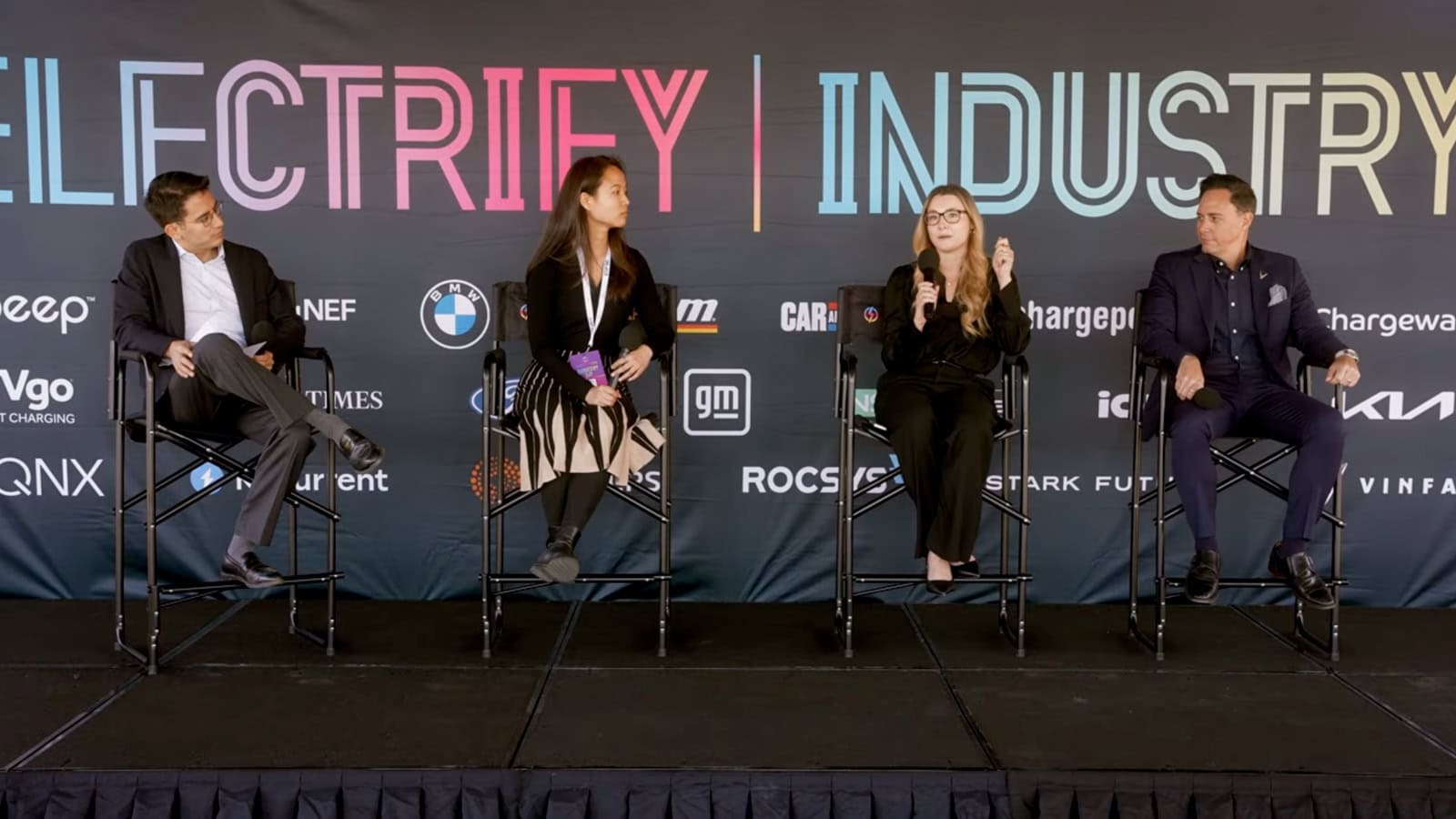- The benefits of electric cars are increasing as charging is more accessible and prices are dropping.
- SUVs like the Kia EV9 are perfect for families that want to reduce carbon emissions without giving up space and innovation.
- Charging on the road will become more convenient and accessible as most new EV models in 2025 gain access to the Tesla Supercharger network.
- Beware! After owning one EV, you might find yourself wanting to replace your ICE vehicle with another EV.
The other week, people traveled all over the United States to view a solar eclipse. They trusted scientists who told them exactly where the path of totality would be. It’s time to continue listening to scientists, especially those who share facts about climate issues related to carbon emissions from gas-powered vehicles. Two-car families could help the planet by accepting the benefits of electric cars, especially the fact electric cars do not have harmful tailpipe emissions.
ADVERTISEMENT
According to Forbes, car ownership is at an all-time high. Over 278 million personal and commercial vehicles were registered to United States drivers in 2022. Of those, 170 million were private and commercial trucks. In 2022, 91.7% of households had at least one vehicle, and in the same year, 37% of households in the United States had two vehicles.
As EVs reach the tipping point of ubiquity in the United States, two-car families are asking if electric cars are good second cars to buy. The quick answer is yes. The benefits of electric cars continue to increase, especially as more EV chargers pop up around the country — reducing the reasons for range anxiety. Electric cars continue to drop in price, and more models are hitting dealership lots.
EVs Are Perfect Commuter Cars and Grocery-Getters

While many EV drivers pride themselves on using them for their daily drivers and road-trip vehicles, electric vehicles are ideal for commuting and running errands.
EV manufacturers are listening to drivers and are building vehicles designed for busy families who need a large and reliable vehicle to get to and from school, practice, and grocery stores. In fact, the best EV for families is spacious, fun to drive, and attractive.
ADVERTISEMENT
The Perfect Family EV Does Exist

Anyone looking for a three-row SUV should check out the Kia EV9. This three-row EV has everything a busy family would want — lots of range, comfortable seating, plenty of gadgets, and innovative technology. Best of all, no emissions!
I recently visited my local Kia dealership and took one for a test drive. My favorite Kia salesperson — Ron — at Fox Kia North in Grand Rapids, Michigan, told me that area moms love the EV9. And this mom quickly saw why! As a mom of two college-age kids, I would have loved to have an EV9 when my kids were younger. The smooth and quiet EV was loaded with safety features, and the interior controls were intuitive and easy to reach. I also loved the rearview mirror, which was in “Full Display” mode — it projected the view from the rearview camera as clear as a bell!
The EV9 has a range of up to 304 miles, and the 99.8-kWh battery is easy to charge at home with a Level 2 charger or on the road with Level 3 DC fast chargers.
Kilowatt Hours of Electricity vs. Gallons of Gas

When you use an EV as your commuter car or family limo, you never have to stop at dirty gas stations. If you have a garage, install a Level 2 charger, and plug in your EV overnight once a week. Plug in before bedtime, and your EV will be full when you awake. You’ll quickly find out that electric cars do save money, as that overnight electric fill-up costs pennies — literally.
According to the Bureau of Labor and Statistics, the average price per kWh in the United States is $0.174. So, the average price of filling the 99.8-kWh battery pack is $17.36. According to AAA, the average gas price is $3.67 (as of this writing).
The Kia EV9 is built on the same platform as the gas-powered Kia Telluride. With all-wheel drive, the Kia Telluride gets an EPA-estimated fuel rating of 19/24 mpg and has a range of 395 miles. Your weekly fill-up in the 18.8-gallon tank will cost about $68. It’s easy to see the cost difference between an electric car vs. a gas car. And, that $68 of polluting petroleum won’t take you much farther than the $17 of electricity — another benefit of electric cars.
ADVERTISEMENT
Are Electric Cars Worth It?
Remember back to 2003, when plasma TVs first hit store shelves? The mind-blowing screens would set you back about $10,000. Now, you can buy a 50-inch smart TV on Amazon for under $350. EVs might not be dropping in price quite like TVs, but they are becoming more affordable.
As more charging stations pop up on major highways and at a variety of destinations, the benefits of electric cars are increasing. The affordability and ease of charging at home and on the road are negating the excuses for not buying them.
Even the concerns about exhausting the grid are falling flat. For over one month, California’s renewable energy production has hit a new milestone as wind, solar, and hydro energy production has exceeded the energy demand. California has more EVs than any other state, and those EVs are not draining the grid. Charging an EV with renewable energy only enhances the environmental benefits of electric cars. If reducing carbon emissions is important to you, then adding an electric car to your family is worth it.
Strategies for EV Buyers

If you are considering an EV but you’re not sure whether or not it’s for you, you could choose a different type of electrified car.
- Fully electric or battery-electric vehicles (BEVs) are the models that run only off of electricity, so they need to charge to run.
- Hybrid-electric vehicles (HEVs) do not require charging. Instead, they have a gas-powered engine and an electric motor that work together to improve fuel economy.
- Plug-in hybrid electric vehicles (PHEVs) use gas and electricity, and the electric motor needs to be charged. They have short ranges — usually between 25 and 50 miles on electric-only — and they are ideal for people with short commutes and a charger in their garage.
All types of electrified cars will reduce your fuel usage, thus reducing carbon emissions. Many of the new BEVs, HEVs, and PHEVs have attractive styling, longer range, and eco-friendly interior features. Consider the new Toyota Prius and Prius Prime. Both models have hybrid powertrains, and the Prius Prime has a plug-in hybrid powertrain — giving drivers up to 44 miles of all-electric range and up to 640 miles of range using the incredibly efficient internal combustion engine.
ADVERTISEMENT
Some potential EV buyers are waiting to purchase in 2025 when EV charging becomes standardized. The majority of new battery electric vehicles manufactured in North America in 2025 will have the North American Charging Standard (NACS) charge port (SAE J3400), access to the Tesla Supercharger network, and this will make EV ownership even more convenient and affordable. Any non-Tesla EV purchased before 2025 will need an adaptor to access the robust Tesla Supercharger network, and some automakers like Ford have already begun shipping the complimentary adaptors.
EVs Are Easy to Love
Adding an EV to your two-car garage might make you want two EVs. We started our EV journey with a 2021 Jeep Wrangler 4xe PHEV and a 2022 Lexus ES300h HEV. After wrecking the Lexus, we replaced it with a Kia EV6 BEV. We originally used the Lexus for road trips, and now we take the EV6. Our Wrangler 4xe is a wonderful car, but my husband doesn’t like driving it much beyond the electric range. I’m confident that we will eventually replace the Jeep with another fully electric vehicle, as we’ve mastered the EV road trip and no longer suffer from range anxiety.
Yes, there is a learning curve to driving an EV, but it doesn’t take long to master it. Having a Level 2 charger in the garage makes EV charging incredibly affordable, so I save hundreds, if not thousands, on gasoline. Level 3 DC fast charging on the road isn’t cheap, but I’ve begun using the Bluedot debit card program to get cash back on EV charging. It didn’t take long to burn through the free 1,000 kWh of Electrify America charging that came with my EV6, and many new models have even more free DC fast charging programs.
Some of the best deals out there include the three years (!) of free charging with the VW ID.4 and the two years of free charging for the Hyundai IONIQ 5 and IONIQ 6. Once Hyundai begins assembling its EVs in the United States and drivers can take advantage of tax credits, those Hyundai EVs will fly off of the lots. You’ll never get free gas or tax credits on gas-powered cars — so jump on those EV deals before they’re gone.
After driving an EV and experiencing the smooth, quiet, transmission-less ride, driving a noisy, gas-powered car seems like a step back into caveman times. As the benefits of electric cars continue to increase, the reasons not to buy an EV are quickly disappearing.
ADVERTISEMENT

FEATURE IMAGE: ELECTRIFY EXPO
FTC: We use income-earning auto affiliate links. Learn more.












2 Responses
If one was able to afford to buy a reasonably-priced EV, as we did replacing our 2013 Prius with a 2023 Chevy Bolt, the question was should we replace my 2003 Toyota Tacoma truck? Easy answer, at the ridiculous cost of EV trucks these days, it was a no-brainer. $75 to over $100K? Are you kidding? Only those with lots of discretionary income can afford that kind of expense. Or debt. It’s ridiculous to pen such an article without paying attention to lower middle-income folks or retired folks who need a truck for occasional pickups that a small EV cannot handle.